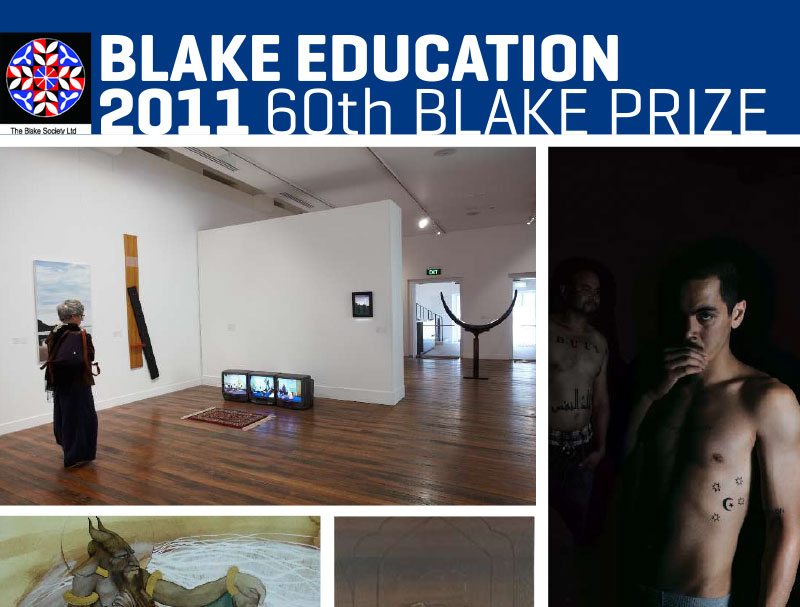
A key focus for the 2011 Blake Prize was the celebration of the Blake’s sixtieth year. This milestone was accompanied by the publication of the monograph, The Blake Book: Art, Religion, Spirituality in Australia, by art historian Rosemary Crumlin. This 220-page book is lavishly illustrated and provides a detailed account of each winner and a helpful history of the development of the Prize. This rich visual survey points to some of the deeper shifts in Australian culture around religious observance and the changing notions of the idea of spirituality, which was also evidenced among the winning works for this year’s prize. The 1951 winning work by Justin O’Brien, a painting that visually illustrates a Roman Catholic doctrine is a world away from the 2011 winning work by Khaled Sabsabi, a three channel video work that shows a ritual of chant and drumming by members of the Naqshbandi Sufi community in Sydney’s west (Naqshbandi Greenacre engagement, 2010) Sabsabi is a Lebanese/Australian artist who works in sound, video and installation practices. The work submitted for the Blake had been shown earlier in the year in a survey show mounted at the Campbelltown Regional Gallery entitledEdge of Elsewhere, that explored cultural diversity as its theme. Sabsabi was impressed by the values of the Naqshbandi Sufi community and developed a relationship of trust that led to this privileged insight into their life and practices. Sabsabi commented: ‘to this community, mysticism is concerned with developing one’s abilities and capacity through emotional, intellectual, and physical practices. They greatly respect all genuine traditions of belief and faith which seek to accept
the responsibility of humanity to care for each other and our world.’ The work presents 90 minutes of video of chants, prayers and the human interaction of families, as children move about and learn unconsciously the tradition of their parents and their wider community. This format depicts religion not so much as a form of belief, but as a song, ritual and a way of being together. As the viewer approaches the three monitors on the floor, there is, laid out before the work, a small red prayer rug. There is an implicit invitation to sit down and to participate rather than to remain an onlooker. The hospitality that the artist found in this community has also found its way into the form of the artwork. It requires participation; it needs onlookers to complete its circle of appreciation. It also invites listening, as one moves from an unfamiliar ritual to some level of sympathy and understanding. As viewers, we are invited to put aside our cultural preconceptions and to listen to an unfamiliar song of faith and community. The very ordinariness of the surroundings of the Greenacre Scout Hall, where this community gathers, serves to raise questions about what it takes a community to survive in new situations. Clearly there are resources in this faith tradition that deals with displacement, loss and confusion. This resource of their faith sustains hopes in the present and the possibility of finding a future in a new situation. This is a spiritual search that is echoed for many people, as they look for resources to face the present challenges of life.
Source: Download PDF